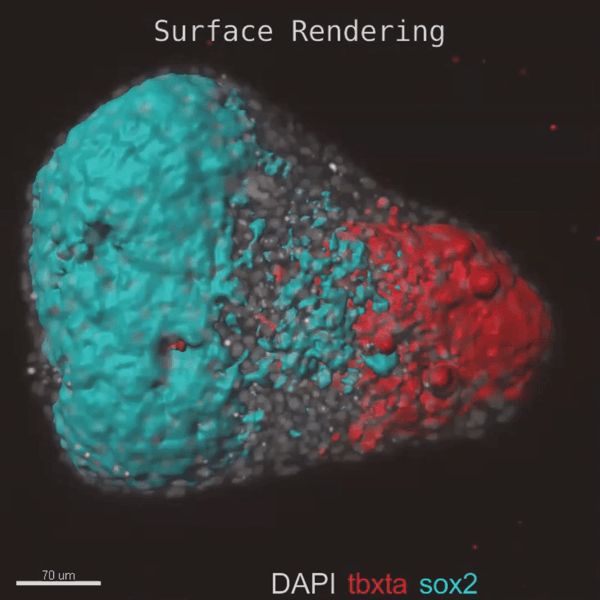Submitted by M. Rodrigues on Tue, 30/06/2020 - 16:22
The Steventon lab has identified the signalling strategy required for explant elogantion in Zebrafish.
“As embryos develop, individual cells must make decisions about what they are to become”, said Tim Fulton, first author of the study recently published in Current Biology. Traditionally it is considered that these decisions are made via the cell receiving signals which inform the cell of its position within the embryo, a process known as positional information. During gastrulation, a major source of these positional signals is the yolk. In this work, the Steventon lab used zebrafish embryonic cells which had been removed from the yolk prior to gastrulation, at the 256 cell stage. The authors demonstrate that these explants can elongate and form all three major layers of the embryo, even after the loss of yolk derived prepattern. They also show that the tissue movements within the explant, which create an elongated structure from an initial spherical mass of cells, are responsible for shaping the signalling domains of the explant and hence regulate the cell fate decisions. Therefore, the authors conclude that the patterns of gene expression observed in the embryo are an emergent property of tissues interacting with one another via signalling and that the movement of different tissues relative to one another regulate how long these tissue regions can interact with one another, and consequently, the fates of the cells within those tissues.
Reference: Fulton T, Trivedi V, Attardi A, Anlas K, Dingare C, Arias AM, Steventon B.Axis Specification in Zebrafish Is Robust to Cell Mixing and Reveals a Regulation of Pattern Formation by Morphogenesis Curr Biology. (2020). https://doi.org/10.1016/j.cub.2020.05.048


